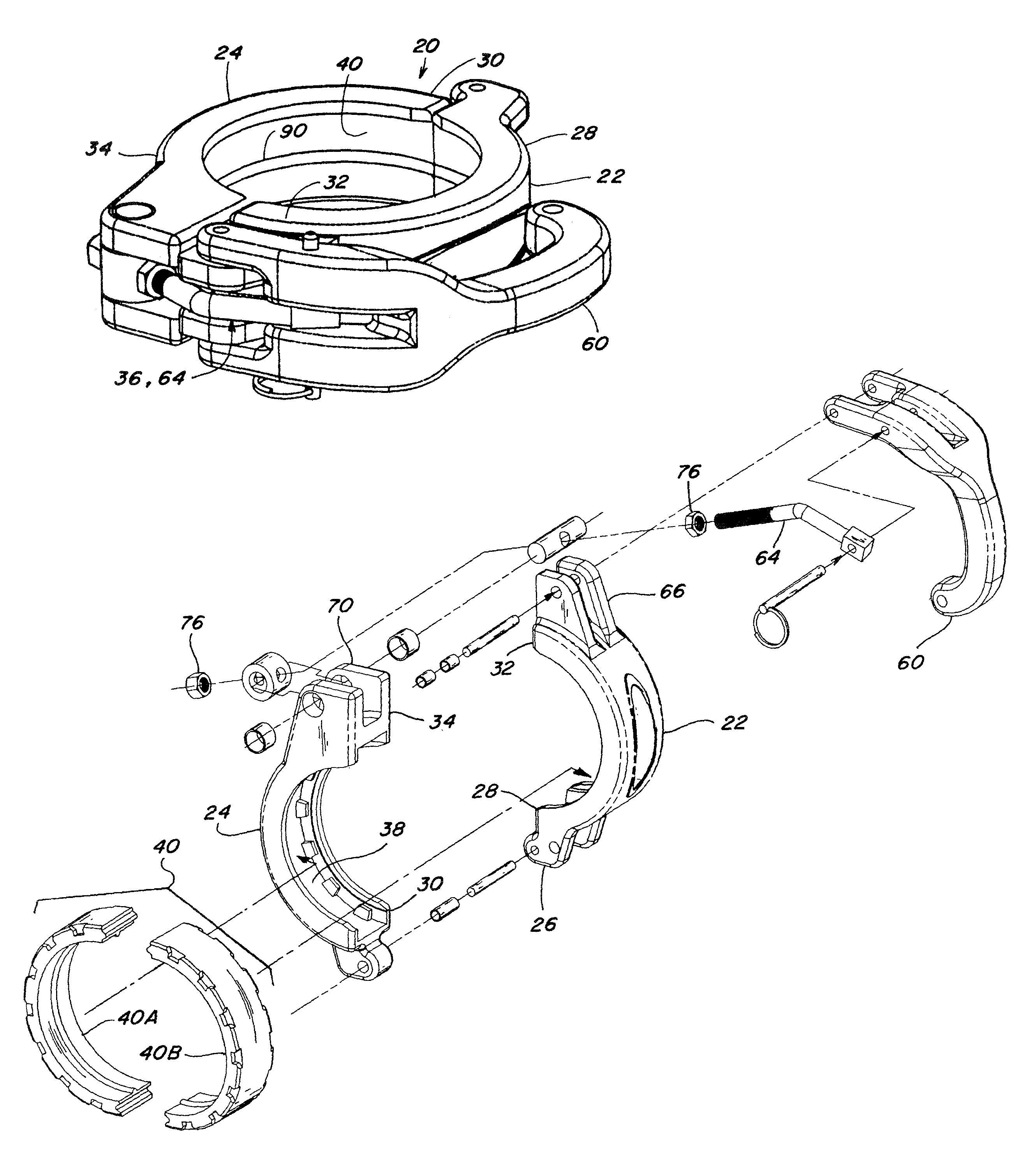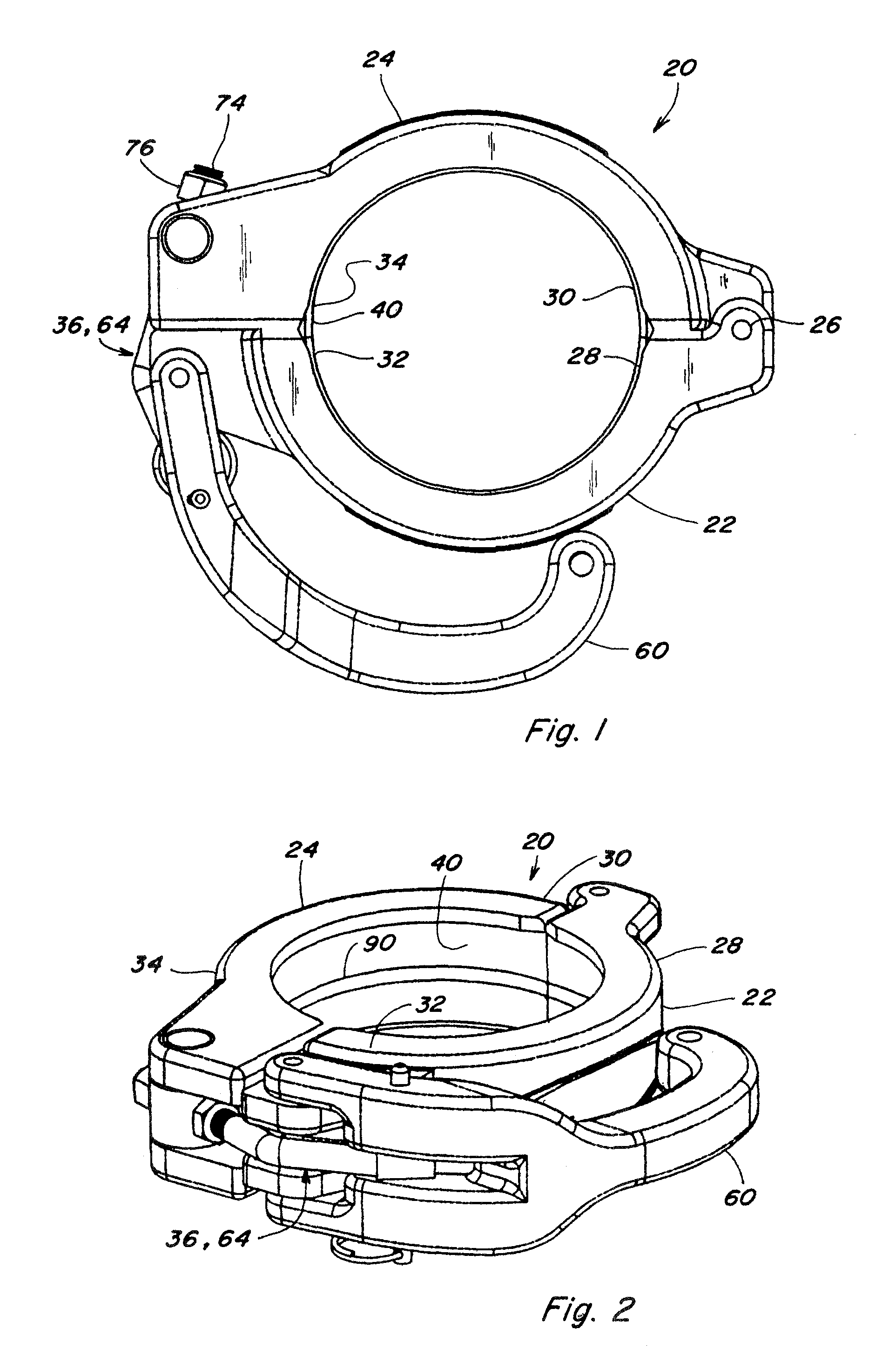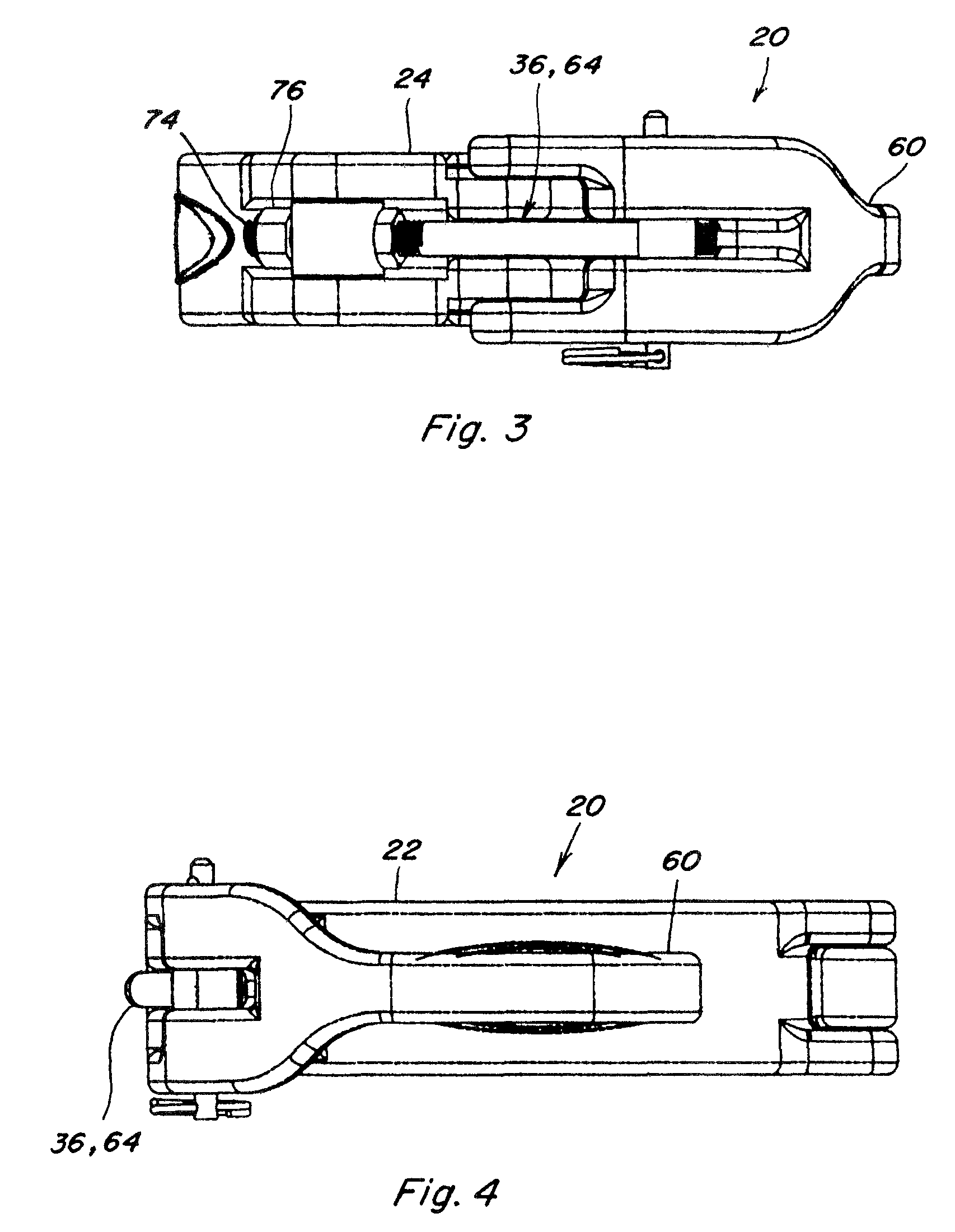Pipe coupler and gasket with positive retention and sealing capability
a technology of positive retention and sealing capability, which is applied in the direction of hose connections, couplings, mechanical devices, etc., can solve the problems of clogging of pipes, improper seated of coupler gaskets, and damage to gaskets or other leakage, so as to reduce the locations of people's positions
- Summary
- Abstract
- Description
- Claims
- Application Information
AI Technical Summary
Benefits of technology
Problems solved by technology
Method used
Image
Examples
Embodiment Construction
[0052]Referring to FIGS. 1 through 28, a pipe coupler 20 constructed and operable according to the teachings of the present invention, is shown. Coupler 20 includes a first semi-circular element 22, and a second semi-circular element 24, having first end portions 28 and 30, respectively, connected for relative hinged movement by a hinge joint 26. Elements 22 and 24 include second end portions 32 and 34, which are brought together when the elements are hingedly closed, and include elements of a clamping mechanism 36 operable, including with just one hand, for securing the coupler about pipe ends, or a pipe end and a fitting, to be coupled together.
[0053]Each of semi-circular elements 22 and 24 has a generally C-shaped cross-sectional shape defining a cavity 38 adapted for receiving a gasket 40. Gasket 40 is of a split configuration, here including two semi-circular gasket sections 40A and 40B, configured to be cooperatively received in cavities 38 of semi-circular elements 22 and 24,...
PUM
 Login to View More
Login to View More Abstract
Description
Claims
Application Information
 Login to View More
Login to View More - R&D
- Intellectual Property
- Life Sciences
- Materials
- Tech Scout
- Unparalleled Data Quality
- Higher Quality Content
- 60% Fewer Hallucinations
Browse by: Latest US Patents, China's latest patents, Technical Efficacy Thesaurus, Application Domain, Technology Topic, Popular Technical Reports.
© 2025 PatSnap. All rights reserved.Legal|Privacy policy|Modern Slavery Act Transparency Statement|Sitemap|About US| Contact US: help@patsnap.com



